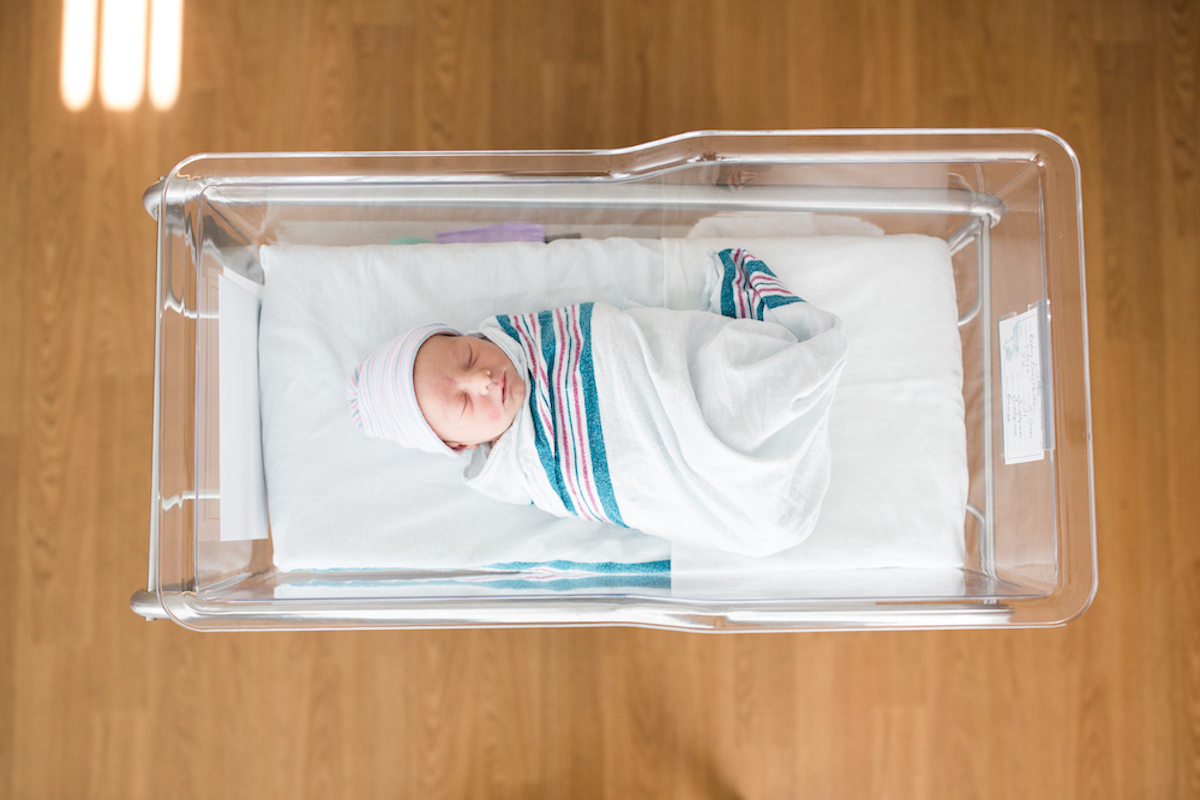Today I want to write about something completely different: baby helmets.
No, I am not talking about bike helmets, which your child (and you) should definitely wear. I’m talking about baby helmets to fix infant head shape. To address “flat head” issues or, more scientifically, plagiocephaly.
Plagiocephaly is one of a number of cranial issues that can occur in infants, related to variations in how the parts of the skull fuse together. Cranial deformities are typically a result of defects present at birth. For example, the most common of these deformities is called scaphocephaly (“hull-shaped skull”), which causes elongation of a segment of the skull and occurs in about 1 in 2,000 live births.
Plagiocephaly, in general, is a deformity that results in a “twisted skull” appearance. It can occur on the front of the face, where one side of the forehead appears more prominent and the ear on that side is higher and farther forward. It can also affect the back of the head, resulting in a forehead that bulges forward on one side and a lower-set ear on the affected side.
This type of cranial deformity can occur as a result of a birth defect (similar to all other cranial deformities), but it can also arise through what is called positional plagiocephaly or deformational plagiocephaly — basically, as a result of holding the same position with the head. The resulting head shape resembles the stylized drawing below.

This problem has gotten a lot of discussion of late, because the incidence of this type of plagiocephaly has gone up significantly since the introduction of “Back to Sleep.”
The Back to Sleep campaign began in the early 1990s and encouraged parents to put their infants on their backs to sleep, to prevent SIDS. (I’ve written about the evidence — which is good — behind this recommendation here.) There is little question that the advice prevented deaths from SIDS, but it was noted as early as 1996 that there was a head-shape side effect. In the pre-Back-to-Sleep period, positional plagiocephaly was thought to occur well under 1% of the time. More recent updates suggest the current share is somewhere between 16% and 45% (see, e.g., this paper and this one).
This isn’t surprising considering the mechanics. Infants spend a lot of time sleeping, and if they spend it all with their head in one position, given the flexibility of the infant skull, there are possible effects. There are some factors that increase the risks for infants. The most important of these are variations in neck rotation — infant torticollis, or other limited ranges of rotational motion, seem to matter. Limited ability to rotate the neck is likely to result in infants always sleeping on one side of their head, and may make it difficult for an adult to vary head position during sleep. This is more common in premature babies and multiple births.
That’s the background. The obvious next questions: Are there any risks to this, and, especially if so, what should be done? Including the question of helmets.
Risks to positional plagiocephaly
The primary concerns here are cosmetic. Severe, or even less severe, forms of positional plagiocephaly can cause variations in head shape that parents (or later, kids) may find upsetting.
There have also been concerns raised about links between plagiocephaly and developmental delays. The idea, if this were causal, would be that variations in skull shape would impact the brain negatively. A meta-analysis of correlational studies suggested some evidence of a link between the diagnosis and motor delays in particular.
However, it seems much, much more likely that the appropriate interpretation of these correlations is, in fact, not a causal one. Motor delays are associated with many things that put infants at higher risk for positional plagiocephaly; it seems more likely that the causality goes in the other direction (or simply that there are other factors that relate to both outcomes).
Treatment
There are, effectively, three broad ways positional plagiocephaly is addressed.
The first is “repositioning therapy,” which is done through parental education. Parents can be encouraged — even before any evidence of an issue — to vary the side of the head their infant sleeps on. When you put your baby down, don’t always have their head the same way. More “tummy time” is another important preventative component, since that strengthens neck muscles and also is time not spent on their back. (I am struck as I write with a vision of my kids trying to do tummy time on this play mat, moving their head up and down until they lost steam, smashed their face into the floor, and started to cry. Ah, memories.)
A second is physical therapy. Physical therapy can address issues of limited neck rotation and can provide a way to scaffold tummy time. Adding physical therapy to the parental education described above is thought to improve prognoses.
Finally, we come to helmets. The idea behind the helmet is that an infant wears it consistently, and it helps reshape the head. Helmets are a commitment. They aren’t painful for babies — reshaping the head is not like how braces reposition teeth — but the intention is that infants wear them 23 hours a day for several months.
This is tough for families, babies get hot, they may be less comfortable snuggling and it’s not a happy situation for many parents. People have trouble following through. On top of this, helmets can cost several thousand dollars (though are sometimes covered by insurance).
With this level of commitment, we’d like to know they work. Do they? There is disagreement. The disagreement comes down to two papers.
The first of these papers was published in 2015 in the journal Plastic and Reconstructive Surgery. In it, the authors take a sample of about 4,000 babies and assign them to either conservative approaches (repositioning, or repositioning plus physical therapy) or to helmet therapy. Their headline result is that resolution of the problem occured in 77.1% of the first group and 94.4% of the helmet group. In addition, among those who started with conservative management and then ended up with a helmet, 96.1% had resolution.
In principle, this study seems very compelling. However, the devil is in the details, and when I say the babies were “assigned” (which is the language from the abstract), it doesn’t mean “randomly assigned.” A random-assignment version of the data above would be convincing. In fact, the way infants were assigned to these groups was based on a full evaluation and consultation with the treatment team. This introduces all sorts of issues — helmets may have been assigned to families with a greater likelihood of adherence, to infants with different types of problems, and so on.
The second paper was published in The BMJ in 2014. In this paper, the authors took a sample of 84 infants and randomized them into either helmet therapy or nothing (“natural course”) and followed them over time. They found no significant difference in the two groups in the resolution of the condition. In both groups, resolution occurred in about a quarter of the children, considerably lower than in the 2015 study, likely due to the inclusion in that study of a higher-risk group.
The obviously helpful aspect of this study is that it was randomized. But there are still a lot of things for people to complain about. It’s small, and, as the researchers disclose, only about 20% of the people they tried to recruit agreed to be in the study. This makes us concerned about the possibility that the effect in the overall population might not be the same as what we see in this selected group (a question of “external validity”). Adherence to the helmet therapy wasn’t uniform, and the authors do not distinguish in the analysis between infants with moderate versus severe issues. Also of note, they exclude a number of higher-risk infants. But … it’s randomized!
In the end, the debate over helmets in the data really hinges on whether you like the larger study that isn’t randomized or the smaller one that is, recognizing that both are flawed. I favor the randomized one.
Putting this all together, there is a reasonable middle approach, which is effectively what the Congress of Neurological Surgeons suggests in its review. The first line of defense should be non-helmet-based, including both parental education and physical therapy. Helmets may be an option if that is ineffective or if the situation is severe. But they shouldn’t be the first line.
Community Guidelines
















